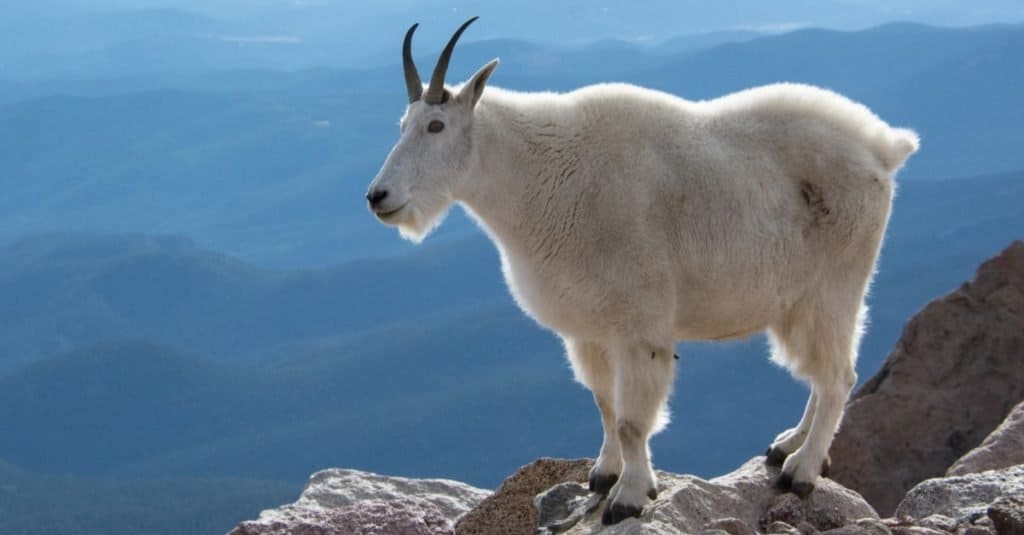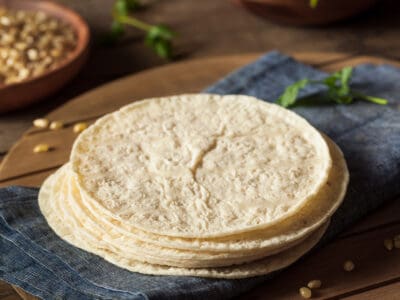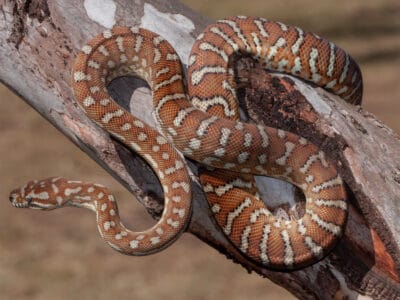Goat
.jumbotron {
background-image: url(“https://a-z-animals.com/media/2018/09/Goat-header-400×300.jpg”);
}
}
@media only screen and (min-width: 641px) and (max-width: 920px) {
.jumbotron {
background-image: url(“https://a-z-animals.com/media/2018/09/Goat-header-470×370.jpg”);
}
}
@media only screen and (min-width: 921px) {
.jumbotron {
background-image: url(“https://a-z-animals.com/media/2018/09/Goat-header.jpg”);
}
}
Goat
Most closely related to the Sheep!
Goat Scientific Classification
Read our Complete Guide to Classification of Animals.
Goat Conservation Status
Goat Facts
- Average Litter Size
- 2
- Lifestyle
-
- Herd
- Favorite Food
- Grass
- Type
- Mammal
- Slogan
- Most closely related to the Sheep!
This post may contain affiliate links to our partners like Chewy, Amazon, and others. Purchasing through these helps us further the A-Z Animals mission to educate about the world’s species..

Spiders that fly! Fish that walk! And 1000+ more incredible animals. Discover them all for FREE
.photo-gallery {
–margin: 0px auto 0px;
–padding: 0px 0px 0px 0px;
}
.gallery-link {
background-image: url(“https://a-z-animals.com/media/2018/09/Goat-close-up-1024×535.jpg”);
background-repeat: no-repeat;
background-size: cover;
background-position: center;
height: 500px;
justify-content: center;
text-align: center;
align-items: center;
display: flex;
border: 2px solid #000;
}
.gallery-link img {
height: 50%;
}
@media only screen and (max-width: 768px) {
.gallery-link {
height: 300px !important;
}
}
The goat is a type of ungulate (a hoofed animal) with big horns and a distinguished beard.
Traversing some of the most rugged and forbidden terrains in the entire world, the goat is an expert mountaineer and climber. Its astonishing ability to ascend steep cliffs and other vertical surfaces have few other comparisons in the animal kingdom. This article will cover both the domesticated goat and all species of wild goats in detail.
4 Incredible Goat Facts!
- These animals were originally domesticated some 10,000 years ago for its meat, milk, and hair. There are some 200 to 300 distinct breeds of domesticated goat alive in the world today with all manner of different traits and adaptations. However, despite being one of the earliest domesticated animals, they will quickly revert to a feral type if they are released into the wild.
- The Damascus goat, a domesticated breed originating from nearby Damascus, the capital of Syria, is well-known for its strange-looking, misshapen head. But in fact, the Damascus goat is an excellent producer of milk and meat.
- In many cultures, these animals are one of the common sacrificial animals for religious ceremonies.
- Well-suited for inhospitable conditions, they can survive for a long time on only sparse food.
Goat Scientific Name
In taxonomical terms, these animals are defined as a collection of approximately nine distinct species that belong to the genus of Capra (which is the Latin term for the goat). These nine species originated exclusively from the Old World. The North American mountain goat, which many Americans may be familiar with, is not considered to be a “true goat” at all; it’s more closely related to the antelope in a separate genus. Regardless, all species belong to the family of Bovidae, which also contains sheep, buffalo, antelopes, and domestic cattle.
Goat Appearance
There are many physical qualities that make a goat, including the split hoofs, the horizontal pupils, the long, scraggly beard, a narrow body and skull, scent glands, and the horns. These horns come in many different shapes and sizes, including straight, corkscrew, and curved, though most bend backward. They are composed of keratin, the same substance as hair and fingernails, and grow throughout the animal’s entire lifetime. In fact, it is possible to tell the goat’s age just by counting the growth rings. As a member of the even-toed ungulates, goats walk on their third and fourth toes. Some also have a vestigial dewclaw, or a nail that grows from farther up the leg, like a dog.
These animals bear a very strong resemblance to sheep, which isn’t too surprising given their close evolutionary relationship. Some species of goats and sheep are notoriously difficult for a non-expert to tell apart. The main differences with the sheep are the more wooly coat, a downturned tail, and, on the occasion, they have horns at all, looped horns that spiral outward from the head (though goats can sometimes have these too). Despite the physical similarities, goat and sheep actually have different numbers of chromosomes, which make them very difficult to breed together to produce a viable hybrid. They also seem to forage in slightly different ways: the goat tends to browse, while the sheep grazes for food on the ground.
Most species and breeds of goat weigh between 40 and 250 pounds and stand up to 42 inches at the shoulders. That’s the difference between the American pygmy goat and the massive Boer goat. Coat markings also exhibit a wide degree of variation, but they’re usually some combination of black, white, brown, tan, or red. Males can be distinguished from females by the larger size of the body and the horns.

Eivor Kuchta/Shutterstock.com
Goat Behavior
The one behavior that really sets goats apart from most other animals, including the closely related antelopes and cattle, is the ability to climb steep mountains and near-vertical surfaces. Mountain goats can live at altitudes of greater than 13,000 feet. Learn more about the toughest animals in the world here. The slim physique (which provides balance), the specialized hoofs (which can grip irregular surfaces), and the muscular structure all seem to play a vital role in allowing the goat to ascend steep areas without falling. These animals also have the ability to leap some 5 feet into the air to reach otherwise inaccessible areas.
Females, called does or nannys, live together with their children in large groups. These herds usually have a distinct hierarchy with a matriarch at the head. She has the responsibility to lead and protect the entire group. The male billys or bucks, as they’re called, live alone or in small bachelor groups and only come into contact with the females for the breeding season, when they start to become more aggressive and fight with each other for access to the females. The scent glands around the skull, feet, and tail appear to play an important role in their communication, particularly as it pertains to the acquisition of a mate. They also make several bleating noises to communicate their thoughts or mood. Herd mates seem to recognize when another goat is happy or sad.
It’s often been remarked upon that unlike sheep, these animals are naturally curious and independent creatures. They will wander around to investigate their surroundings and frequently bite objects with their mouths to interact with them. Humans have found all kinds of unusual roles for the goat. In Morocco, people have found that goats are attracted to the bitter taste of the fruits from the argan tree. After eating the nuts inside, they excrete a type of profitable oil that’s used in cosmetics. There also appear to be some therapeutic benefits for people interacting with goats. This has spawned the idea of goat yoga businesses in a few places around the United States. The goats are free to interact with and even climb on people as they do yoga poses, though they might provide a distraction from the actual yoga.
Goat Habitat
These animals inhabit elevated mountain habitats all over Asia but also small parts of Europe and Africa as well. Usually, the range is indicated by the name of the species: the West Caucasian and the East Caucasian tur, the Siberian ibex, the Ethiopian or Walia ibex, the Spanish ibex, the Alpine ibex, and the Nubian ibex (Nubia is in Egypt, but this species also exists in the Arabian Peninsula) all have their own distinct geographical range. In addition, the markhor goat is endemic to Central Asia, and the wild goat, from which the domestic goat was first bred, inhabits a stretch of territory between Turkey and Pakistan.
Domesticated goats, which are a subspecies of the wild goat, can be found in almost any ecosystem or climate where people want to rear them. The length and consistency of their coat can be altered via artificial selection to help them cope with the specific habitats in which they’re raised.
Goat Diet
These animals are a type of “ruminant” that digests plant material with a four-chambered stomach. The first two stomachs are like large fermentation vats. The microbes contained within them break down the tough cellulose of plants into smaller carbohydrates. After the food is digested in the first stomach, the animal will regurgitate it, chew on it with the cheek teeth in their skull, and then swallow it once again to help break it down further. Many of the nutrients are absorbed in the goat’s massive 100-foot-long intestines. Since digestion is such a long and arduous process, the animal’s stomach works constantly at almost all hours of the day. It takes about 11 to 15 hours for the food to fully pass through the goat’s digestive system.
What does the goat eat?
These animals will eat almost any kind of hay, grains, weeds, tree bark, and sometimes even grasses. It supplements this with salts from mineral deposits. They tend to be browsers, meaning they consume vegetation from shrubs, trees, and other plants above the ground.
Goat Predators and Threats
Wild goats appear to be threatened most of all by poaching (their horns are still prized as trophies) and habitat loss. While some of them are protected from habitat destruction by their extreme elevations, the loss of some natural land to human agriculture and ranching is a persistent problem that threatens some species.
What eats the goat?
Both adult and juvenile goats are preyed upon by large carnivores such as wolves, leopards, lynxes, and brown bears. The protection of the herd and the high elevation does offer some natural defenses against predators. The horizontal pupils also give them a wide field of view to detect nearby predators.
Goat Reproduction, Babies, and Lifespan
When breeding season arrives, males become more aggressive with each other and start emitting a pungent odor. The largest and strongest male that prevails over the others in a fight will usually have near-exclusive breeding rights to the nearby females in a single herd. This ensures that the best characteristics tend to be passed down from one generation to the next.
Many species breed in the fall and produce a single offspring (and sometimes twins or triplets) in the spring. When she’s ready to give birth to the baby, the female briefly departs from the group and finds a safe, isolated location where she won’t be disturbed. The new offspring is called a kid, and once it is old enough to walk (almost always shortly after its birth), the baby will rejoin the group and enjoy the protection it offers.
The baby is weaned at about four to six months of age but may remain with its mother for the first year of life. Females tend to stay with the group, while males depart and seek their own fortune. It takes a few years for a goat to reach sexual maturity, and depending on the species or breed, they tend to have a life expectancy between six and 24 years.
Goat Population
Both the conservation status and population numbers vary quite a lot by species. The Siberian ibex is categorized as near threatened by the IUCN Red List with perhaps as many as 150,000 mature individuals remaining in the wild, while the near-threatened wild goat has some 70,000 adults remaining. At the other end of the population spectrum, the Western Caucasian tur is endangered; it only has about 3,000 or 4,000 adults remaining in the wild. By contrast, the number of wild goats in the world is absolutely dwarfed by the number of domestic goats, which may be as high as a billion.
Goats in the Zoo
The goat is a very popular exhibit across many of America’s zoos. The San Diego Zoo has a Nubian ibex in its Africa Rocks exhibit, while the Columbus Zoo has a markhor goat in its Asia Quest area. Zoo Atlanta, Oregon Zoo, and Smithsonian’s National Zoo in Washington, DC keep domestic goats in their respective farm sections, including the American pygmy and Nigerian dwarf goat. Some of these zoos may allow visitors to get up close and even feed their domesticated goats. The pygmy goat offers a small, approachable, friendly package.
View all 115 animals that start with G
Goat FAQs (Frequently Asked Questions)
Do miniature Goats make good pets?
Miniature goats make great pets, but they do require playmates. Small goats are friendly and form a bond with people. While miniature goats aren’t best kept in a house they can be companions in a backyard if given enough space.
Goats vs. Lambs
Goats and lambs are often confused. There are several key differences between the two. First, lambs are young sheep under the age of one while the term ‘goat’ refers to a goat at any age. In addition, the two animals have very different appearances. Lambs have woolen fur while goats have hair.
Are Goats herbivores, carnivores, or omnivores?
Goats are Herbivores, meaning they eat plants.
What Kingdom do Goats belong to?
Goats belong to the Kingdom Animalia.
What phylum to Goats belong to?
Goats belong to the phylum Chordata.
What class do Goats belong to?
Goats belong to the class Mammalia.
What family do Goats belong to?
Goats belong to the family Bovidae.
What order do Goats belong to?
Goats belong to the order Artiodactyla.
What type of covering do Goats have?
Goats are covered in fur.
In what type of habitat do Goats live?
Goats live in dry woodlands and mountainous regions.
What is the main prey for Goats?
Goats eat grass, fruit, and leaves.
What are some predators of Goats?
Predators of Goats include humans, wolves, and mountain lions.
How many babies do Goats have?
The average number of babies a Goat has is 2.
What is an interesting fact about Goats?
Goats are most closely related to sheep!
What is the lifespan of a Goat?
Goats can live for 10 to 15 years.
How fast is a Goat?
A Goat can travel at speeds of up to 10 miles per hour.
What is the scientific name for a goat?
All true goats belong to the genus of Capra. The domestic goat, as a subspecies of the wild goat, goes by the scientific name of Capra aegagrus hircus.
Where did goats originate?
The wild goat probably first evolved somewhere in Asia millions of years ago. It was later domesticated in what is now southeastern Turkey some 10,000 years ago. There also appeared to be a separate domestication event in Iran at a later date.
What is the difference between an ibex and a goat?
Ibex describes most species of wild goat with backward-curving horns, but terms like ibex, tur, and goat are often used interchangeably to describe the same species. That’s because the relationships between all the goat species are still being worked out.
Where do goats live?
Wild goats inhabit mountainous and highly elevated areas around Europe, Asia, and small parts of northeastern Africa. Domesticated goats, on the other hand, can live almost anywhere on the planet with people.
What are the key differences between goat milk and cow milk?
The key differences between goat milk and cow milk are the nutrition they provide and the common allergies and restrictions.
What should you name your pet goat?
What about a pun like Billy the Kid? Check out these: 100+ goat name ideas!
Sources
- David Burnie, Dorling Kindersley (2011) Animal, The Definitive Visual Guide To The World’s Wildlife
- Tom Jackson, Lorenz Books (2007) The World Encyclopedia Of Animals
- David Burnie, Kingfisher (2011) The Kingfisher Animal Encyclopedia
- Richard Mackay, University of California Press (2009) The Atlas Of Endangered Species
- David Burnie, Dorling Kindersley (2008) Illustrated Encyclopedia Of Animals
- Dorling Kindersley (2006) Dorling Kindersley Encyclopedia Of Animals
- David W. Macdonald, Oxford University Press (2010) The Encyclopedia Of Mammals
















